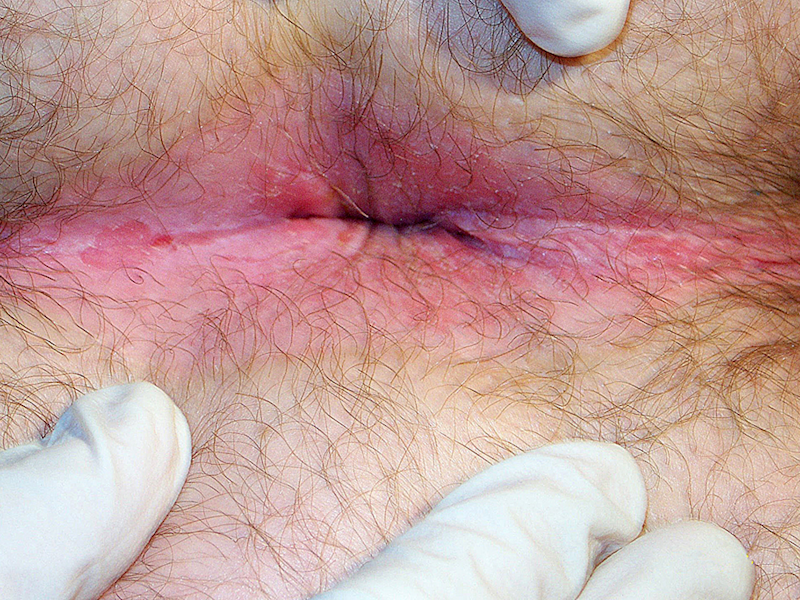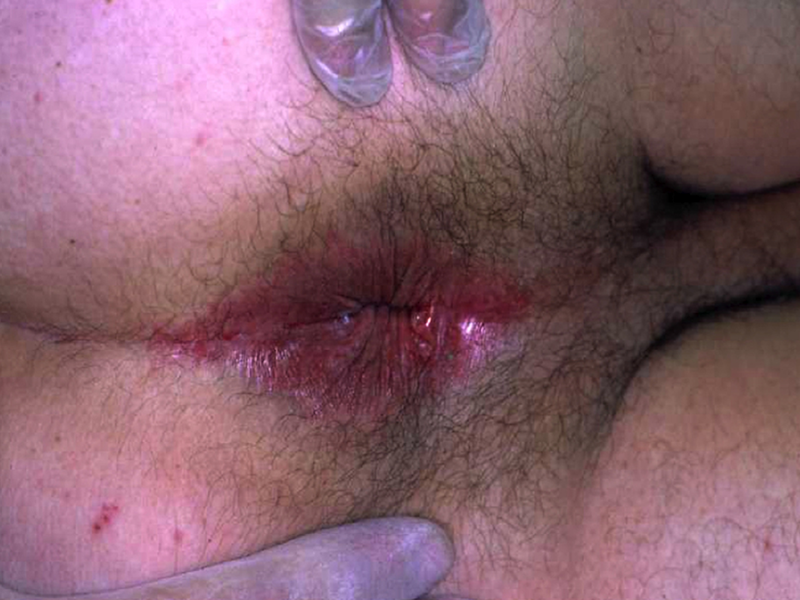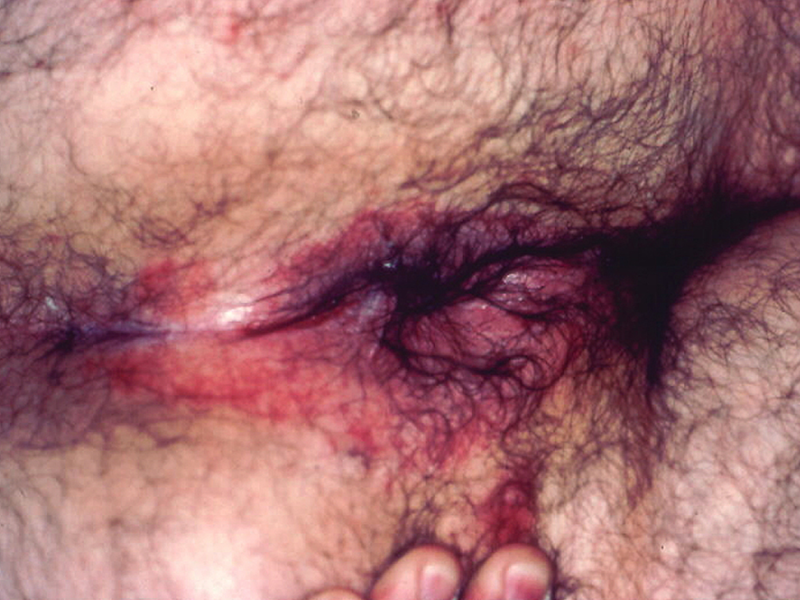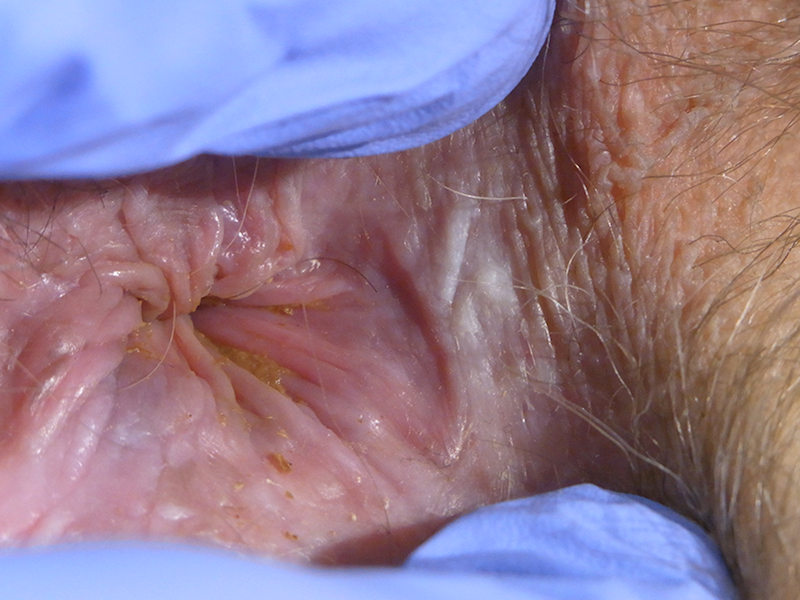What is it?
Psoriasis is a common, multi-system inflammatory disorder which is thought to have a complex immune-mediated aetiology.
Psoriasis can have varying clinical presentations ranging from localised large scaling plaques to a generalised rash of multiple small lesions. Pustular eruptions may occur.
It is a chronic, recurring disorder which is triggered by environmental factors such as infection, trauma, or drugs. It is not contagious.
Clinical presentation
Classical features are red, scaly patches of skin, with well-defined edges.
The overlying scale has a silvery-white appearance, but this is absent on the genitals due to the warm and moist environment. Genital psoriasis may present as salmon-red smooth, non-scaly patches most commonly on the penis or natal cleft.
Other signs to look for include:
- large, flat patches or plaques on the extensor aspect of the elbows or knees
- scaly tear-drop shaped spots on the trunk or buttocks (guttate psoriasis)
- dry, flaky scalp or dandruff
- nail changes such as pitting, ridging, onycholysis
Warning
May contain graphic images of human anatomy, medical conditions and medical procedures. Viewing discretion is advised.
Psoriasis
Management
- Patients should avoid any known triggers (such as certain soaps, synthetics).
- Topical management is the mainstay of treatment, depending on the severity of the disease. Options include:
- topical coal tar
- salicylic acid (to remove scale)
- steroids
- Severe psoriasis should be referred to a dermatologist.




